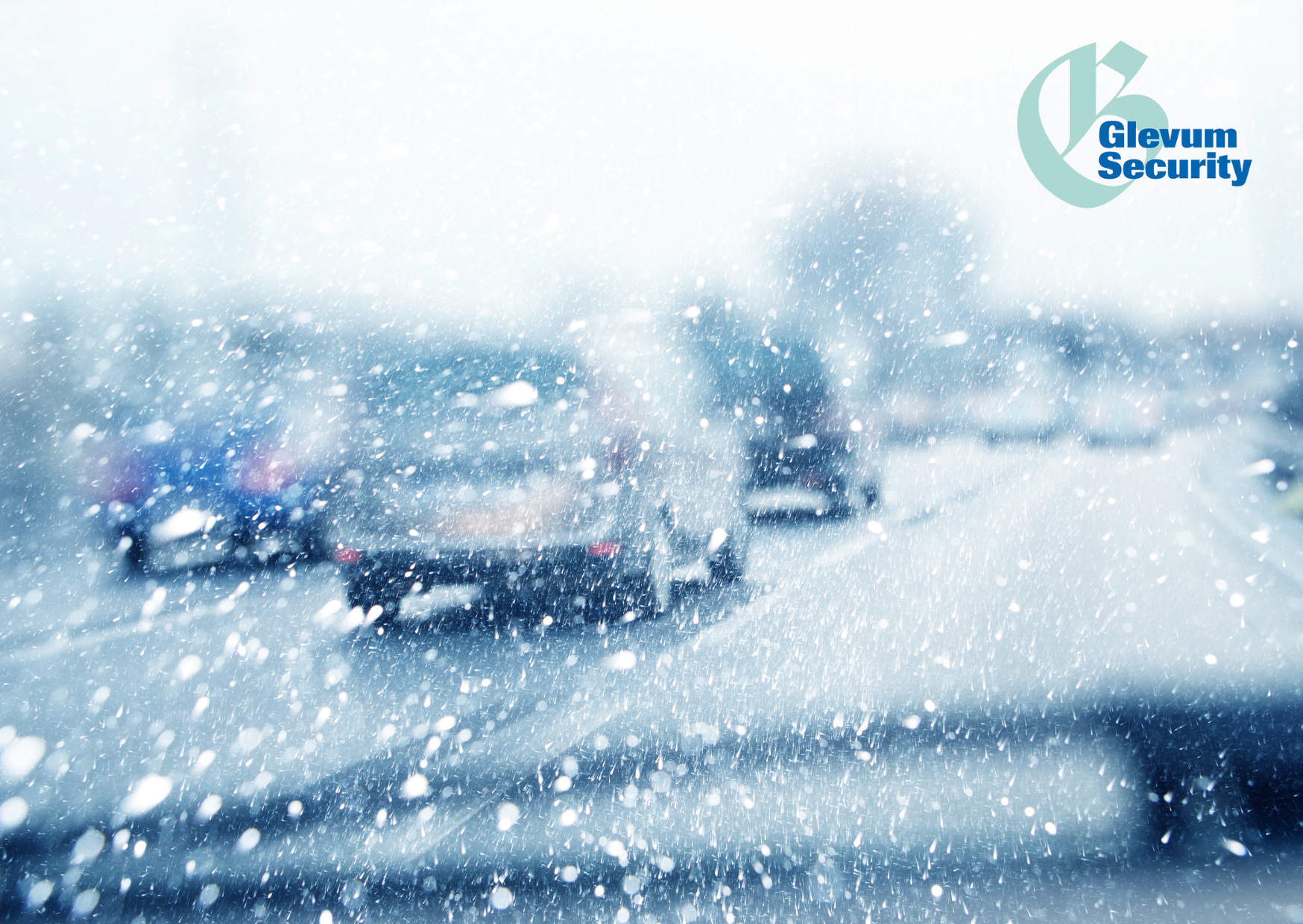With the clocks going back a few weeks ago, we are most definitely in the midst of winter, with a need to focus on winter driving and being more careful when on the roads.
Winter brings with it the magic of snow-covered landscapes and the joy of holidays. However, it also comes with its own set of challenges, especially when it comes to driving. Snow, ice, and cold temperatures can create hazardous conditions on the roads. To ensure your safety and the safety of others, it’s essential to be well-prepared and know how to navigate winter weather with confidence.
With the inevitable changes in driving conditions brought about by winter weather, it’s essential that we are all prepared to handle everything that is thrown at us, no matter what type of vehicle we drive. From heavy downpours to the potential of thick snow, the weather will obstruct the way we drive for the next few months.
In the early stages of winter, the early dark evenings and the low daylight sun are just two issues that require our attention. There are legal obligations that must be complied with, whether as a company or a driver. The company must consider its duty of care towards its workforce and drivers should show knowledge of the law and act responsibly. Our drivers here at Glevum Security are trained specifically in this field of safe driving, no matter the weather or time of day. We respond to incidents in the depths of the night continuously, therefore this is a need for many businesses across the UK. Last year in 2022, the new Highway Code also brings into play more stringent advice regarding driving in winter conditions that must be adhered to, where failure to do so will result in substantial fines for a driver of up to £1,000.
Let’s look at the employer’s legal obligations first and consider guidance to ensure legal compliance. Driving on company business is a high-risk task that an employee undertakes on behalf of the company. Unfortunately, many employers either overlook this or are just not aware of their obligations related to their duty of care towards the employee.
Employers should ensure there is a policy in place related to the vehicle fleet (including ‘grey fleet’) that demonstrates legal compliance. This policy should include:
- Are the vehicles fit for purpose?
- Are the drivers licensed to drive the vehicle?
- Are all drivers able to demonstrate both mental and physical wellbeing?
- Are all driver and vehicle documents checked and recorded?
- Is advice and guidance related to winter driving available and distributed to all?
- Does a policy of ‘vehicle safety checks’ exist, and is this document distributed to all drivers?
Now let’s consider the employees’ legal obligations. All employees who drive for work should comply with the following:
- Initially always ask the question, “Is the journey necessary?”
- Carry out regular vehicle safety checks, especially tyres and lights, in winter
- Plan your journey, study the weather forecast, provide an ETA to those at your destination
- Ensure your vehicle is equipped with a mobile phone charger, ice-scraper, blanket, de-icer, high-visibility clothing and a hazard warning triangle, and make sure you wear warm/suitable clothes
- Defrost the vehicle, ensuring all snow is removed from glass areas, lights and your roof, as this could either fall down onto your windscreen or blow off onto somebody else’s (Highway Code Sect 229 and Road Traffic Law-DVLR Reg 23; Con & Use Regs 30;)
- Ensure you have plenty of fuel as your journey may take longer than usual (see section on EVs)
- Check your wiper blades are clean from dirt and are in good working order
- Always drive on dipped headlights, not driving lights (Highway Code Sect 226; RVLR Regs 25 & 27)
- Remove any mud from your number plates
- Check your brakes are working properly before you set off
- Allow extra time for your journey due to the weather conditions and increased traffic
1. Prepare Your Vehicle
Check Your Tires
Proper tire maintenance is crucial during winter. Ensure your tires have adequate tread depth and are properly inflated. Consider switching to winter tires, which provide better traction in icy and snowy conditions.
Inspect Your Battery
Cold weather can be tough on car batteries. Have your battery tested to ensure it’s in good condition. Replace it if it’s weak to avoid the risk of a dead battery on a cold morning.
Antifreeze and Fluids
Check your vehicle’s antifreeze levels and other fluids like windshield washer fluid. Make sure they are at the appropriate levels and that the antifreeze mix is suitable for cold temperatures.
Emergency Kit
Pack an emergency kit in your car, including items like a flashlight, blankets, non-perishable snacks, a first-aid kit, and a portable phone charger. These items can be a lifesaver in case you get stranded in winter weather.
2. Drive Safely
Reduce Speed
In snowy or icy conditions, reduce your speed. Slower driving allows for better control and gives you more time to react to unexpected situations.
Increase Following Distance
Maintain a safe following distance from the vehicle in front of you. It takes longer to stop on slippery roads, so having extra space can prevent rear-end collisions.
Braking and Accelerating
Use gentle, gradual movements when braking and accelerating. Sudden actions can lead to skidding. If your vehicle has antilock brakes (ABS), apply steady pressure to the brake pedal in case of a skid.
Avoid Cruise Control
Don’t use cruise control on icy or wet roads. It’s easier to manage your vehicle’s speed manually to adapt to changing conditions.
3. Visibility Matters
Clear Snow and Ice
Before driving, clear all snow and ice from your vehicle, including windows, mirrors, lights, and the roof. This ensures maximum visibility and prevents hazards for other drivers.
Use Your Lights
Turn on your headlights, even during the day. This makes your vehicle more visible to others. Keep your headlights clean to maintain optimal brightness.
4. Be Informed
Check the Weather
Before heading out, check the weather forecast and road conditions. If conditions are severe, consider delaying your trip if possible.
Stay Updated
During your journey, stay updated on weather and traffic reports. This can help you make informed decisions about your route and any potential detours.
5. Know When to Stay Home
Sometimes the safest option is to stay home when weather conditions are treacherous. If travel is not necessary, consider postponing your plans until conditions improve.
Electric vehicles
These vehicle types are becoming more common in vehicle fleets but due to their construction and operational systems. But with these vehicles, there are issues that need to be highlighted:
EV batteries do not respond well to cold weather, and this can reduce the range by 10-30 per cent until the battery is warm. This means you must charge your car for longer if you are expecting to go a certain distance, keeping at least 20% charge stored. This will in-turn keep your battery warm when it is cold outside. Where possible, keep the vehicle in a garage, especially when night temperatures go below 0C.
When it comes to braking, on slippery roads, the brake-like force to the wheels can cause a loss of grip, reducing the tyres’ ability to steer the car. Turn down or switch off the regenerative braking system to avoid slides. The regenerative system is easily switched off through the car interface (if you are unsure consult your driver’s manual). Remember to switch it back on in the spring!
With tyres, you must check they are correctly inflated. This can only be achieved by regular checking of the tyres. Remember, the low centre of gravity and weight of the batteries place greater strain on the tyres, therefore you must check these more regularly than the average petrol or diesel vehicle.
The advice and guidance provided is far from conclusive, but hopefully it will be seen as thought-provoking. Since the invention of the motor vehicle, it has always been that driving in hazardous conditions requires a skill which is not just dependent on technology but also common sense, responsibility and knowledge of the rules and regulations of driving, both on and off the road.
Winter weather demands extra caution and preparedness when driving. By following these tips, you can enhance your safety on the road and reduce the risk of accidents during the cold season. Remember, it’s better to arrive at your destination a little later than to risk your safety by rushing in hazardous conditions.
Drive safely, be prepared, and embrace the beauty of winter while ensuring you and others stay safe on the road.
If you have any concerns over attending late-at-night alarm calls for your business becasue of the weather and the tricky conditions we are set to face, then do contact us today, we would be more than happy to assist you and your needs this winter.


